
Resumen
El Indo-Pacífico ha sido un término de muy rápida aceptación dentro del ambiente académico, pero con un escaso debate sobre sus límites y alcances epistémicos. En Iberoamérica, existen pocas voces que han cuestionado su origen y naturaleza. El presente documento busca invitar a realizar una mayor reflexión sobre el mismo desde una perspectiva integral. Es decir, partir desde un análisis detallado de su origen a través de la metageografía hasta explorar su sentido semántico más profundo. Sin lugar a duda, es un concepto en construcción con amplias ambigüedades que debe invitarnos a conocerlo más para ser más conscientes de su utilización en nuestros trabajos académicos.
Abtract
The Indo-Pacific has been a term of swift acceptance within academic circles, yet it has prompted little debate regarding its epistemic boundaries and scope. In Ibero-America, only a handful of voices have questioned its origins and nature. This paper seeks to encourage deeper reflection on the concept from a comprehensive perspective. That is, beginning with a detailed analysis of its origins through metageography and extending to an exploration of its deeper semantic meaning. Undoubtedly, it remains a concept under construction, laden with significant ambiguities, which should compel us to engage with it more closely and become more aware of its use in our academic work.

Abstract
An overview of UNAM's Instituto de Astronomía teaching and research resources is presented. Undergraduate studies in Physics at Facultad de Ciencias are followed by Graduate Studies in Astrophysics supported by three institutes with astronomical researchers. Extragalactic and cosmology groups both in Mexico City and Ensenada are presented, followed by some recent research highlights and ongoing projects. Finally, the major observing facilities at the National Astronomical Observatory in Baja California, Large Millimeter Telescope Alfonso Serrano (LMT) and High Altitude Water Cherenkov (HAWC) observatories in Puebla, together with international facilities as Gran Telescopio Canarias (GTC) and Sloan Digital Sky Survey (SDSS), are observing resources for extragalactic and galactic studies.

Abstract
The concept of the Blue Economy (BE) emerged during the Rio+20 summit proposed by several coastal countries. It aims to improve human well-being and social equity while reducing environmental risks and ecological damage. The objective of this chapter is to present the importance of the blue economy in the Pacific Rim and APEC, as well as its contribution to sustainability and climate action. To meet the objective, first, the concept of the blue economy and its relevance in the Pacific Rim are explained. Sections two and three present some BE policies and actions of Japan and Mexico, which contribute to climate action, biodiversity conservation, and coastal communities' well-being. To develop the sections, the systematic search methodology was applied to several academic and institutional websites. The conclusions highlight the importance of the blue economy in Japan and Mexico recognizing the contribution of the oceans to address the impacts of climate change, especially through blue carbon initiatives, and promoting sustainable and inclusive development in the Pacific Rim. Finally, some areas to enhance BE performance are suggested.

Abstract
Since 2015, University of Tokyo and National School of Languages, Linguistics and Translation from National Autonomous University of Mexico have organized activities and projects related to it such as self-directed learning, programmed and independent TeleTandem, language exchange and several academic activities between both universities. These activities have given an important impact to the academic and professional attitude and concerns of the students and teachers who are engaged in. In 2020´s COVID 19 situation, in the online synchronic and non-synchronic classes, students are expected to be more self-directed somehow than ever. This study examines the self-directed elements about co-evaluation and self-evaluation that have been manifested in the learning journals of TeleTandem as basic COIL (Collaborative Online International Course) to know how the students used the Zone of proximal development in Vigotsky sense with their TeleTandem partners.

Abstract
XXIst Century Hispanic America has seen important changes in the world of religious faiths and practices. All along XXth Century a minority of Hispanic Americans have found new spiritual identities. Nevertheless, in spite that Religious Liberty has been consecrated in the Universal Declaration of Human Rights, the burden of a Roman Catholic institution that carries a strong historical presence and is identified with regional social identity has prevented full acceptance of this trait in Hispanic American societies, hindering the full -fledged acceptance of this fundamental Human Right.

Resumen
Este ensayo analiza cómo se representan temas de la dinámica del matrimonio heterosexual —en términos de insatisfacción emocional y sexual— en una selección de ficción japonesa contemporánea escrita por renombradas novelistas femeninas como Natsuo Kirino, Yūko Tsushima, Mitsuyo Kakuta, Yukiko Motoya, entre otras. El objetivo de este ensayo es analizar algunas novelas como medio de resistencia cultural y crítica abierta al matrimonio obligatorio en el Japón contemporáneo. En otras palabras, tanto en la sociedad japonesa contemporánea como en algunas de sus actuales obras de ficción escritas por autoras femeninas, se cuestiona implícita y explícitamente la centralidad de los matrimonios heterosexuales así como las formas particulares que deben adoptar esas relaciones.
Para mi querido amigo MASU
Abstract
This essay will explore the representation of the dynamics of heterosexual marriage in terms of emotional and sexual dissatisfaction, in a selection of contemporary Japanese fiction written by renowned female novelists such as Natsuo Kirino, Yūko Tsushima, Mitsuyo Kakuta, Yukiko Motoya, among others. The objective of this essay is to analyze some novels as a means of cultural resistance and open criticism regarding mandatory marriage in contemporary Japan. In other words, both in Japan contemporary society and some of its current fiction written by female authors, both the centrality of heterosexual marriages and the particular forms those relationships should take are being implicitly and explicitly challenged.
For my dearest friend MASU.

Resumen
Las primeras décadas del Siglo XX marcaron el aumento de las tensiones políticas y diplomáticas entre Japón y Estados Unidos. El aumento de las fricciones desplegó un juego geoestratégico que tiene como escenario principal América Latina. En ese sentido, México jugó un papel importante mediante la implementación de acciones para capitalizar a su favor el acercamiento por parte de Japón. Bajo este contexto particular, en la prensa y dentro de los servicios de inteligencia estadounidenses, surgió el tema de la existencia de un “tratado militar” entre México y Japón.
Abstract
The first decades of the 20th century marked the rise of political-diplomatic tensions between Japan and the United States. In this context, increased friction deployed a geostrategic game having a main stage in Latin America. In that sense, Mexico played an important role implementing actions to capitalize in its favor the approach by Japan. In this particular context, the recurring theme of the existence of a “military treaty” between Mexico and Japan emerged in the press and within the US intelligence services.

Resumen
En el marco de los sistemas socio-ecológicos, hacer frente al cambio climático requiere conocer tanto la interacción entre sistemas como las interacciones dentro de los mismos. En este sentido, este trabajo pretende dibujar un esquema sobre la interacción entre las empresas y el marco institucional que las rodea para así, promover capacidades que les permitan hacer frente al cambio climático y ser resilientes ante el mismo. Se insinúa que, en ausencia de una política verde clara, las asociaciones entre empresas y otros aliados pueden crear un entorno que favorezca el desarrollo de estas capacidades.
Abstract
In the framework of socio-ecological systems, coping with climate change requires both knowledge of the interaction between systems and the interactions within them. In this sense, this work seeks to draw an outline of
the interaction between the institutional framework that surrounds companies and these for the promotion of capabilities that allow them to face climate change and be resilient. There are hints that in the absence of a clear green policy, partnerships between companies and other allies can create an environment that favors the development of these capacities.
Resumen
La crisis de la reproducción social se profundizó durante la postpandemia acompañada de una crisis económica y financiera a nivel mundial. Las desigualdades e inequidades de género en el desenvolvimiento del confinamiento mostraron como objetivo prioritario “desatar los nudos estructurales de la desigualdad de género” ubicando al cuidado de las personas y el medio ambiente en el centro del “desarrollo sostenible” de nuestras sociedades. Al poner en el centro de la discusión al cuidado como parte de un sistema de políticas públicas con enfoque de género es inminente una nueva rearticulación del gasto público desempeñado hasta el día de hoy. El objetivo del presente trabajo es partir de las brechas sobre el cuidado y su relación con la reproducción social para ahondar en el tiempo dedicado al trabajo doméstico y de cuidado no remunerado que existe entre mujeres y hombres al interior de la unidad familiar. La hipótesis de investigación es demostrar cómo la desigualdad en el tiempo dedicado por parte de las mujeres al trabajo no remunerado frente a los varones en la unidad familiar redunda en la falta de oportunidades de aquellas para obtener mejores ingresos al participar en empleos precarios remunerados tanto en la economía formal e informal.
Abstract
The crisis of social reproduction deepened in the post-pandemic, and a global economic and financial crisis accompanied it. Gender inequalities and inequities in the development of confinement showed, as a priority objective, to "untie the structural knots of gender inequality", placing the care of people and the environment at the center of the "sustainable development" of our society. By setting care at the center of the discussion and as part of a system of public policies with a gender focus, a re-articulation of public spending carried out to date is imminent. The objective will be to start from the gaps in care and its relationship with social reproduction to delve into the time committed to domestic work and unpaid care among women and men within the family unit. The research hypothesis is to show how the inequality in the time devoted by women to unpaid work, compared to men in the family unit, results in the lack of opportunities to acquire better income because of their involvement in precarious jobs, both paid in the formal and informal economy.
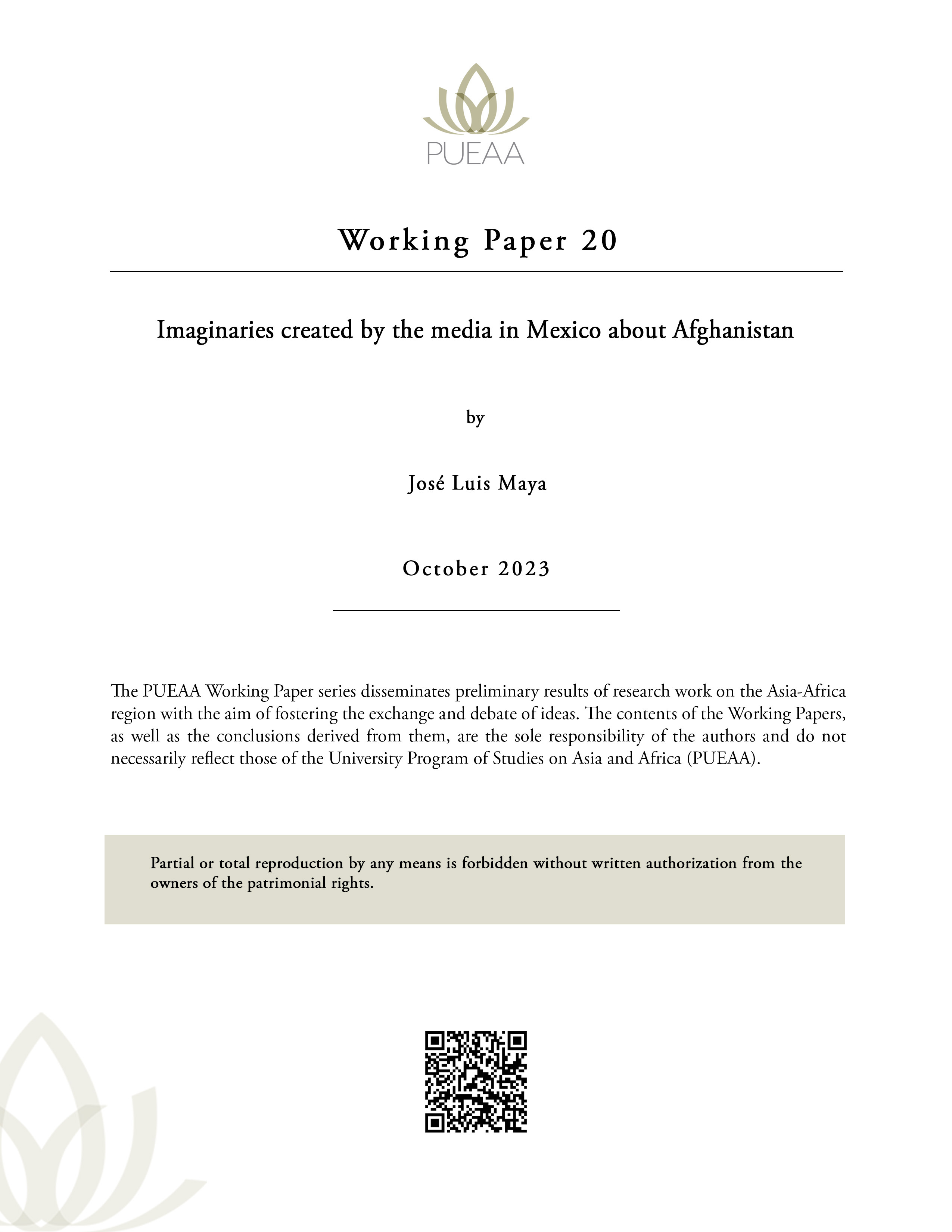
Abstract
Following the withdrawal of U.S. troops from Afghanistan, after 20 years of occupation, the eyes of different sectors around the world have turned to that Asian country. Mexico's mass media are no exception. Day by day they report stories from different perspectives, through which Mexicans form an imaginary of that country. It is true that the media, in its different formats, directly influences the perception that people form about Afghanistan, but how close to reality are these stories?
Resumen
Tras la retirada de las tropas estadounidenses de Afganistán, después de 20 años de ocupación, los ojos de diferentes sectores alrededor del mundo voltearon al país asiático. Los medios de comunicación mexicanos no fueron la excepción. Día a día reportan historias desde diferentes perspectivas, a través de las cuales los mexicanos se formaron un imaginario sobre ese país. Es cierto que los medios de comunicación, en sus diferentes formatos, influyen de manera directa en la percepción que las personas se forman sobre Afganistán, pero ¿qué tan cercanas a la realidad son esas historias?
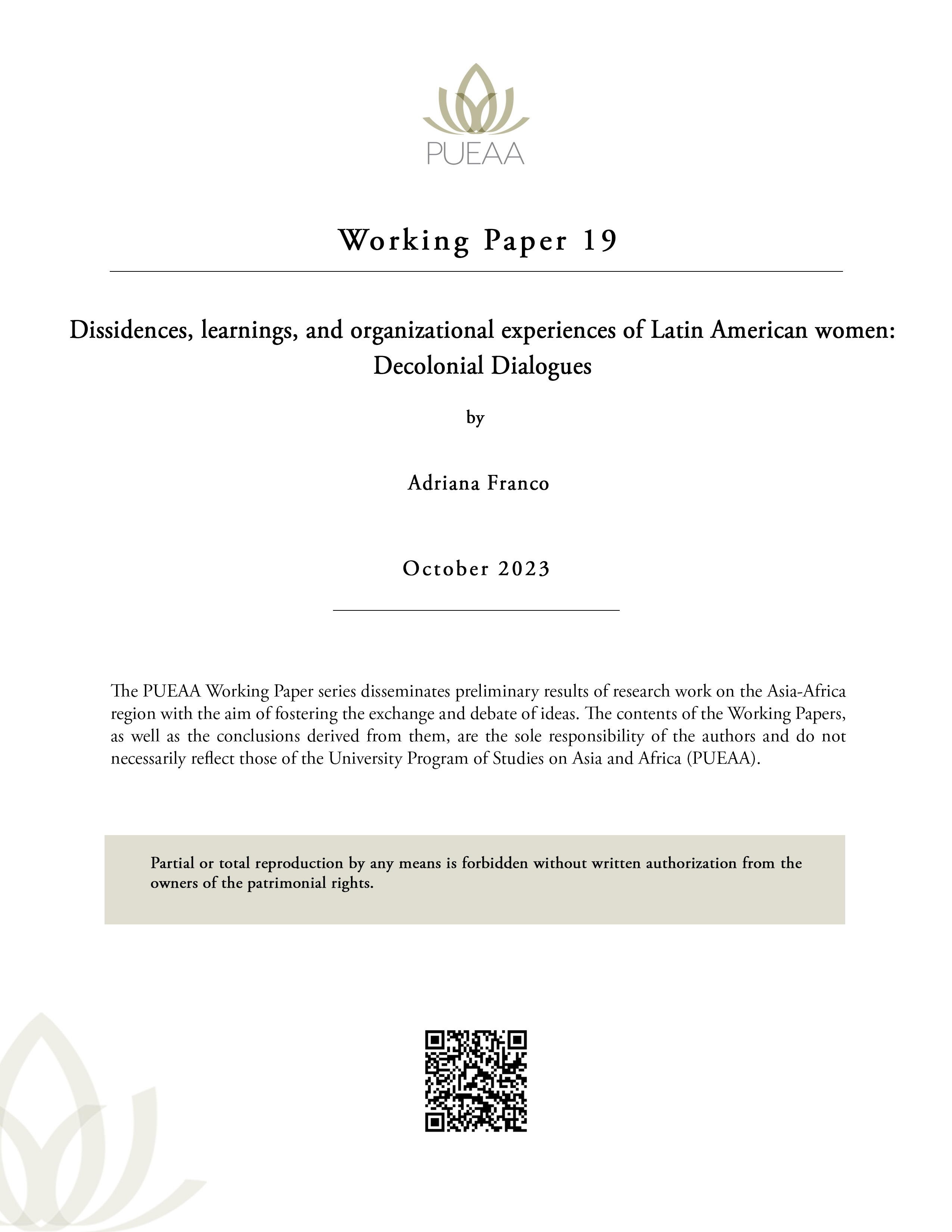
Abstract
In recent years, violence against women has increased significantly in Latin America. Faced with this context, women have not been passive, but have organized themselves to confront the violence of the system. The community feminism of Bolivia and Guatemala, as well as the organization of black women in Brazil are just a few examples of the different women's movements throughout the region. The proposals that have come out of these groups have made visible the historical violence of capitalism and are also proposing new ways of socialization based on the recovery of their knowledge and experiences. In this way, in this text some of their approaches will be shared, emphasizing that the proposals confront the prevailing system and provide alternatives to face the crisis of civilization.
Resumen
En años recientes, la violencia contra las mujeres ha incrementado de manera significativa en América Latina. Ante este contexto las mujeres no han permanecido pasivas, sino que se han organizado para confrontar la violencia del sistema. El feminismo comunitario de Bolivia y Guatemala, así como la organización de mujeres negras en Brasil, son sólo algunos ejemplos de los diferentes movimientos de mujeres en toda la región. Las propuestas que han surgido de estos grupos han visibilizado la violencia histórica del capitalismo y también están proponiendo nuevas formas de socialización a partir de la recuperación de su propio conocimiento y experiencias. De este modo, algunos de sus planteamientos serán -compartidos, enfatizando que las propuestas confrontan el sistema predominante y brindan alternativas para enfrentar la crisis civilizatoria.
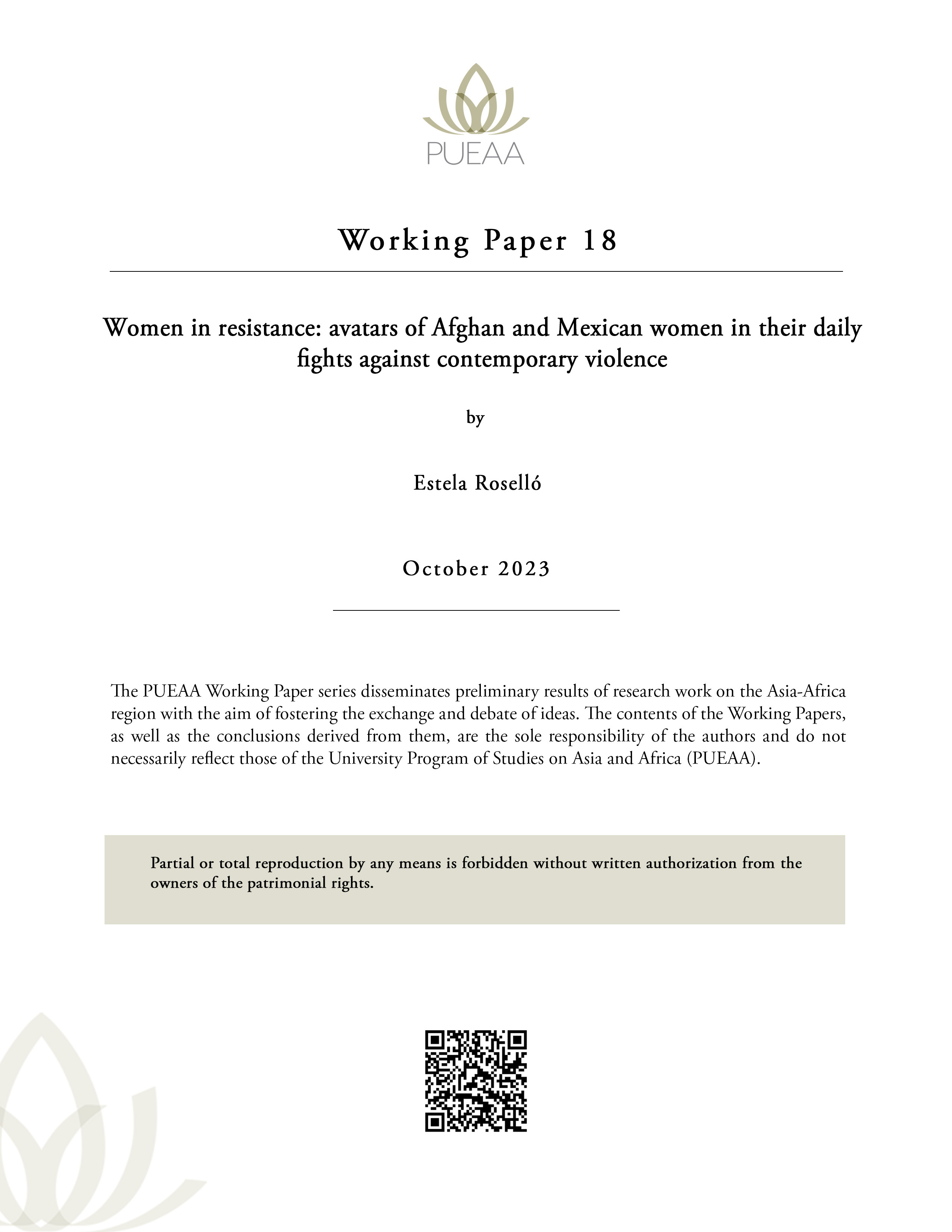
Abstract
The next reflection has the purpose of analyzing the resilience strategies of Afghan women and girls throughout the 21st century to compare them with those other strategies that many Mexican women and girls from rural and urban communities have to use on a daily life to survive in the midst of different types of conditions of marginalization, discrimination and violence. The communication compares the representation and construction of negative female stereotypes originated in the most traditional visions of Islam and Catholicism to analyze the response that contemporary, resilient, and combative women have offered to fight against these cultural assumptions in search of greater freedoms, rights, and opportunities to live with dignity. This cultural comparison has the purpose of looking at women as active subjects, capable of responding and acting in situations of oppression, discrimination, and daily mistreatment in patriarchal societies where violence against women is one of the social, political, economic and cultures of most urgent attention.
Resumen:
La siguiente reflexión tiene el objetivo de analizar las estrategias de resiliencia de mujeres y niñas afganas a lo largo del siglo XXI para compararlas con aquellas otras estrategias que mujeres y niñas mexicanas, de comunidades rurales o urbanas, deben utilizar en su vida cotidiana para sobrevivir entre diferentes tipos de condiciones de marginalización, discriminación y violencia. Este artículo compara la representación y construcción de estereotipos femeninos negativos originados en las visiones más tradicionales del islam y el catolicismo, para analizar la respuesta que mujeres contemporáneas, resilientes y combativas han ofrecido para luchar contra estos supuestos culturales, en busca de mayores libertades, derechos y oportunidades para vivir con dignidad. Esta comparación cultural tiene el propósito de observar a las mujeres como sujetos activos, capaces de responder y actuar en situaciones de opresión, discriminación y maltratos cotidianos en sociedades patriarcales donde la violencia contra las mujeres es uno de los problemas sociales, políticos, económicos y culturales de mayor urgencia.
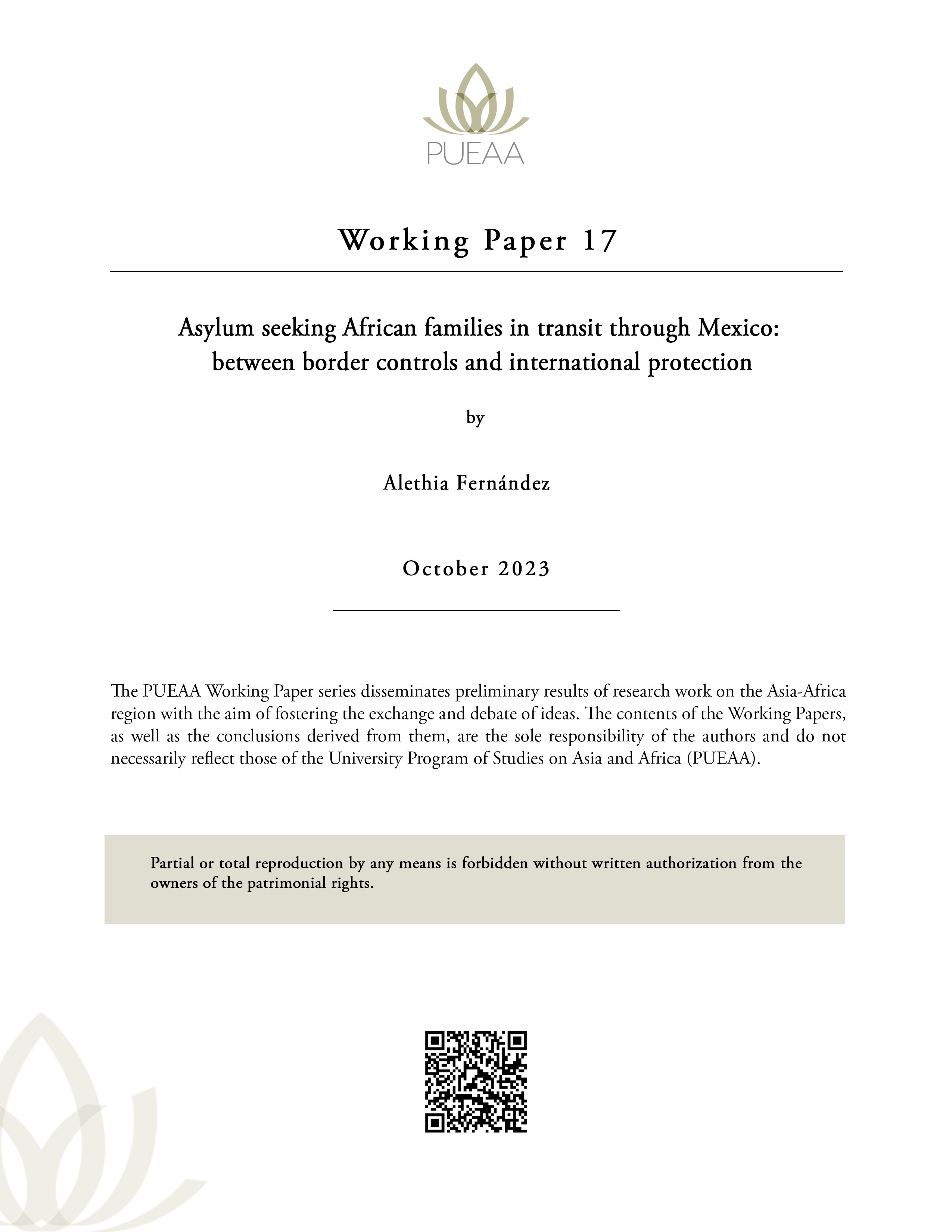
Abstract
African migrants in Mexico are migratory flows that have been less studied than migration from Latin America (Cinta Cruz, 2020). In the last five years, migrants from 35 different African countries were detained in Mexico. Although arrests of African persons are much lower than in the case of Central American countries, on average, between 6 and 19 African persons are detained per day. It is essential to know their mobility patterns, identify their international protection needs, and the main obstacles they face, whether to cross into the United States or to remain in Mexico as refugees (Narváez Gutiérrez, 2015). In this working paper, my objective is to present some data on the migration of African people in Mexico after the arrival of caravans in 2018 and to reflect on the impact of a global discourse that stereotypes migrants as criminals or sick people in the access to human rights of African asylum seekers in Mexico and on the effects of a growing tendency to treat migrants as beneficiaries of temporary humanitarian aid rather than as subjects of rights.
Resumen
El flujo migratorio de africanos en México es uno de los menos estudiados desde Latinoamérica (Cinta Cruz, 2020). En los últimos cinco años, migrantes de 35 países africanos fueron detenidos en México. A pesar de que estos arrestos son mucho menores que en el caso de países centroamericanos, en promedio entre 6 y 19 personas son detenidas diariamente. Es esencial conocer sus patrones de movilidad, identificar sus necesidades de protección internacional, y los principales obstáculos a los que se enfrentan, ya sea que crucen a los Estados Unidos o se queden en México como refugiados (Narváez Gutiérrez, 2015). El objetivo de este artículo es presentar algunos datos sobre la migración de personas africanas en México después de la llegada de las caravanas en 2018, y reflexionar sobre el impacto de un discurso global que estereotipa a los migrantes como criminales o enfermos, y cómo esto afecta el acceso a los derechos humanos de los solicitantes de asilo en México y sobre los efectos de una tendencia creciente a tratar a los migrantes como beneficiarios de ayuda humanitaria temporal y no como sujetos de derechos.
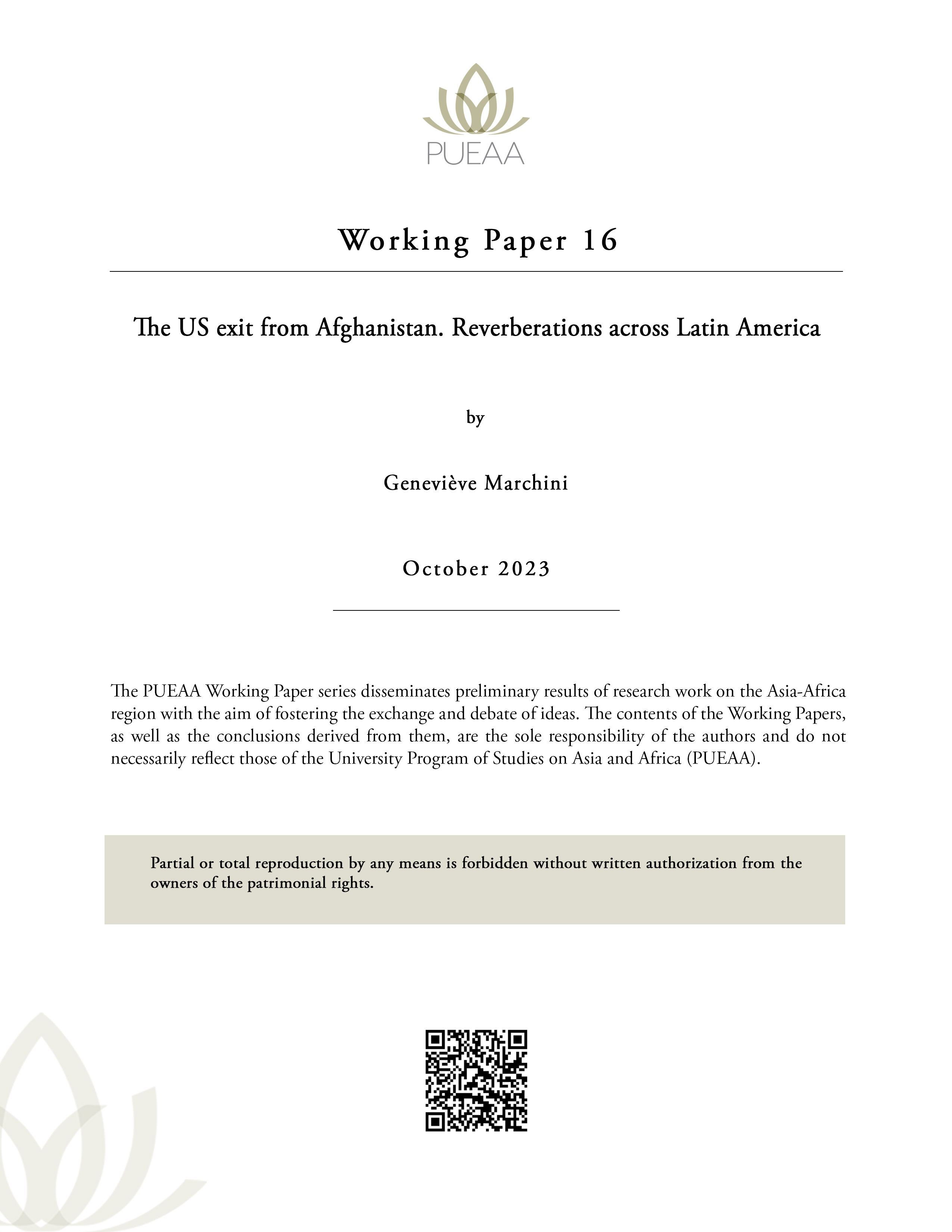
Abstract
In this paper, I aim to analyze which direct or indirect implications the US withdrawal from Afghanistan had for Latin America, especially in the economic sphere, an aspect less addressed. My point is that there were few direct economic effects, due to the lack of relevance of trade and investment links between Afghanistan and Latin American countries, but the consequences of the US exit reverberated through the global system and through its real and potential effects on topics of common interest. As peripheral and semi-peripheral countries, and despite the absence of international wars in the region, several Latin American countries share with Afghanistan aspects of an insertion in the global economy which includes illicit activities or activities at the margins of legality, like the production, transit and exports of drugs, or the privatization of war, or are affected by the struggles between the great powers, especially the United States and China.
Resumen
Este artículo pretende analizar cuáles son las implicaciones directas e indirectas que tuvo en Latinoamérica la salida de EEUU de Afganistán, especialmente en el ámbito económico, aspecto menos explorado. Mi punto es que hubo algunas afectaciones económicas directas, gracias a la falta de relevancia de los vínculos comerciales y de inversión entre Afganistán y los países latinoamericanos, pero las consecuencias de la salida de EEUU repercutieron a través del sistema global y a través de sus efectos reales y potenciales sobre temas de interés común. Como países periféricos y semiperiféricos, y a pesar de la ausencia de guerras internacionales en la región, varios países latinoamericanos comparten con Afganistán aspectos de su inserción en la economía global que incluyen actividades ilícitas o al margen de la legalidad, como la producción, tráfico y exportación de drogas, o la privatización de la guerra, o se ven afectados por los enfrentamientos entre las grandes potencias, especialmente Estados Unidos y China.

Resumen
Este documento se enfoca en el proceso de aprendizaje de los japoneses al estudiar español como segunda lengua. Como primer punto se abordan algunas características de los estudiantes japoneses, así como sus intereses al estudiar un idioma. Posteriormente se describe el sistema de enseñanza de idiomas en Japón; y se aborda el comportamiento de los estudiantes al momento de estudiar un idioma, así como el tipo de actividades que prefieren realizar durante la clase. Además, se mencionan diversos métodos de enseñanza que pueden ser aplicados de acuerdo con los intereses de los jóvenes japoneses y las diferencias culturales. Por último, el autor considera que enseñar español a estudiantes japoneses contrae diversos retos que deben ser solucionados para obtener mejores resultados; de tal forma, los maestros deberán implementar diferentes métodos de aprendizaje basados en que las personas aprenden haciendo las cosas por sí mismos.
Abstract
This paper focuses on the Japanese students’ learning process when they study Spanish as a second language. First, it mentions some students’ profile characteristic and their interests in learning a new language. Second, it describes the learning language system in Japan, the students’ behavior in the language classes, and which activities they prefer to do in class. In addition, it describes different kinds of learning methods that could be applied depending on the students’ interests and cultural differences. Finally, the author considers that teaching Spanish to Japanese students raises several issues that have to be attended in order to achieve success. Since learning a language implies hard work and effort, teachers must try different methods and approaches relying upon scientific evidence based on one fundamental assumption: people learn by doing things themselves.

Resumen
Este documento resume los resultados del proyecto de investigación titulado “Long-term outcomes of bilateral student exchange program between Mexico and Japan: 50 years of governmental cultural diplomacy”; este proyecto realiza un análisis de los programas de intercambio estudiantil enfocado en los jóvenes que se implementaron desde 1971 entre México y Japón. De tal forma, se realiza un breve recuento del proceso de las negociaciones entre el gobierno mexicano y el gobierno japones para implementar e impulsar el programa de intercambio estudiantil. Además, se realiza un análisis de los resultados cuantitativos y cualitativos de los programas de intercambio entre México y Japón a través de las décadas; para obtener los datos cuantitativos se hace un reencuentro de cuantos alumnos han participado en dichos programas, y para obtener los datos de los resultados cualitativos se toman en cuenta las experiencias personales de ex becarios que estudiaron en México o Japón para conocer los efectos que ocasionaron estas estancias estudiantiles en la vida diaria de los estudiantes. Finalmente, el autor considera que los programas de intercambio entre ambos países es una herramienta para lograr el desarrollo a través de la cooperación.
Abstract
This paper summarizes a research project, titled “Long-term outcomes of bilateral student exchange program between Mexico and Japan: 50 years of governmental cultural diplomacy”. The project provides an analysis of the youth exchange program that was implemented in 1971 between Mexico and Japan. In this way, paper describes the negotiation process between the Mexican government and the Japanese government to implement exchange programs. Apart from this, the author analysis the quantitative and qualitative results of the youth exchange program between Mexico and Japan through decades. To obtain the quantitative information, it considers how many students have participated in this program; for obtaining quantitative results, it considers the students’ personal experience for knowing the effects of studying in Mexico or Japan in their lives. Finally, the author believes that studying the exchange program between Mexico and Japan is a means of achieving development through cooperation.